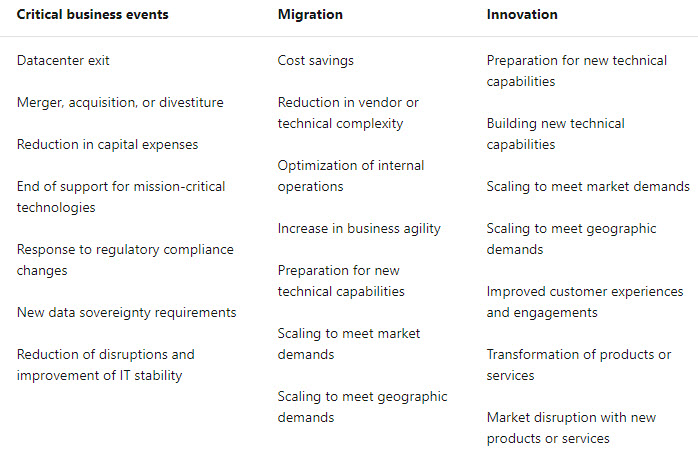
(It’s not only connected to the pandemic)
Within the past few months, I had a lot of interactions with various community members, IT Pros, business professionals, read/watched a lot of social network posts, blogs, trainings, follow discussions on the topic. Therefore, the Digital Transformation was super charged, since the global lock-down occurred.
Further, this shows that the Digital Transformation initiative is suddenly pushed forward. The process is heavily influenced by the way how we do business today – how we “go” to work, how we interact with colleagues, customers, and partners. The change is mostly visible during “attendance” on meetings, conferences, and trainings.
At the end, We might realize that some tasks are more easily, and efficiently done via digital presence. I don’t expect that we will go to the other extreme -nothing physical, but the way how businesses interact, has changed.
We see this trough impressive number and statistics, published for various cloud services – Microsoft Teams reported 2.7 billion minutes of talk within a day, increase of utilization was at 775%, 44 million daily users at peak. Google had similar experiences with their services as well, Google Meet has 2 million users per day added (they even enabled it to function with Google Classroom), over 2 billion minutes on daily basis. Some of the services, like Zoom, also recorded significant increase in utilization and popularity. This exposed serous security issues and privacy concerns (i.e. half a million accounts are available on Dark web for purchase).
In Azure, Widows Virtual Desktop deployments raised 3x. This caused some server sprawl in the Microsoft datacenters. This issue is mitigated, as part of ongoing effort to accommodate the increased need of resources.
This implies that, all these datacenters (Microsoft, Amazon, Google etc.), not including the co-location hosting providers and telecom providers, need to extend their hardware capacities (servers, memory, disks, network etc.), which means that we might get to a shortage of hardware for the rest. I have seen couple of local companies (Enterprise), stockpiling servers, network equipment, laptops and PC’s to compensate for the potential lack of equipment (mitigate issues with production, distribution, and potential delays).
Based on all that, I can see the following things happening:
- We are seeing the architecture/design cracks in our current services (increased workloads, capacity thresholds, security/privacy issues)
- We will get the senior management onboard with the transformation. Drawback, we might not have clear targets (short to mid-term).
- We need to choose the “Lighthouse Project” in cloud adoption process, and we need to think of the “quick wins”.
- There will be gaps, and mistakes. They can be corrected.
- Digital divide (people, technology, skills) will become more obvious.
- We can learn from experience of the others. Some already went or are going through the process.
I have been talking about Cloud Adoption Framework (CAF) few times with clients, mapping their business and technical needs towards cloud adoption. I see it as a valuable tool within this process of accelerated digital transformation we are experiencing right now.
Cloud Adoption Framework (CAF) for Azure
Microsoft defines the framework for cloud adoption as joint effort in sharing best practices between them, customers and partners. It tackles business (justification and outcomes), technical (skills, capacity), and governance and management (ITOps, DevOps, SecOps), all backed with best practices and process improvement steps. In a nutshell it’s a full life cycle framework.
The Phases are:
- Strategy – Define business justification and expected outcomes.
- Plan – Align actionable adoption plans to business outcomes.
- Ready – Prepare the cloud environment for the planned changes.
- Migrate – Migrate and modernize existing workloads.
- Innovate – Develop new cloud-native or hybrid solutions.
- Govern – Govern the environment and workloads.
- Manage – Operations management for cloud and hybrid solutions.

Consequently, the Cloud adoption journey, begins when business and IT can realize that cloud can accelerate a specific business transformation process. Today, we might need to fast track the process. What would the common ground between them be, considering the recent development? Let’s walk through the steps.
Strategy
There are few categories that define the motivations, that will influence our move to the cloud. Depending on situation, your motivations will fall under several of them. The more we focus on them, discuss and fine tune, we will choose the dominant one. As a result, this will define our adoption direction and strategy (business outcomes and justification). Subsequently, we will get to our Lighthouse Project.

For our quick wins process, the focus would be on:
- Critical business events: Reduction of disruptions and improvement of IT stability
- Migration: Increase in business agility, Preparation for new technical capabilities, Scaling to meet market demands
- Innovation: Preparation/Building for new technical capabilities, Improved customer experiences and engagements, Transformation of products or services
Business outcomes
For Digital Transformation process to work, it must start with the business outcome in mind. /such transformation, can be costly, time-consuming process. It will affect multiple aspect of the organization, influence already established processes, digital divide, people readiness.
For our quick win process, business outcomes would be:
- Reduce capital expenses for hardware and software
- Improve service provision times based on flexible capacity and scaling
- Meeting and exceeding Customer engagement outcomes
This will be our bare minimum, in areas of Fiscal, Agility and Customer outcomes. This means that the Lighthouse Projects we choose, will support these outcomes, and based on that we can provide the appropriate justification (ROI) on those projects – financial model. High level calculation would be:

Creating the financial model is rather complicated and overwhelming task. As a result, being accurate is a complex process.
The Initial investment will aggregate the CapEx and OpEx assigned to the transformation process. The actual Gain from Investment is based on Revenue and Cost deltas.

Revenue deltas need to be obtained from the business stakeholders. Cost deltas will increase/decrease based on the transformation process. Most importantly, focus will be on the expenses:
- Hardware procurement, including maintenance and support costs/contracts
- Energy consumption (electricity, cooling)
- Increased capacity of Internet link
- Backup and Disaster Recovery
We might simplify the calculations, by focusing on qualitative, not only quantitative model of calculations (quick win). For instance, using cloud as datacenter extension to support Your services.
Quick win: Calculate the detailed cost/benefit ratio further down the line. Given the tools how we can calculate the cost of the service in the cloud, we won’t be jumping blindly and incurring enormous costs. Rationale behind it would be that, within a short period (i.e. 3 months) we will have a very precise insights on the costs and benefits of the cloud solution. Based on that we can do corrections on the model, or given the circumstances, discontinue the service in the cloud, and move back to traditional model.
Conclusion
In short, with Strategy Phase, we will perform business and IT alignment. We will have a clear vision what we want to achieve, and we can move to the Plan Phase. We will cover that in Part 2 of the series.




Be the first to comment